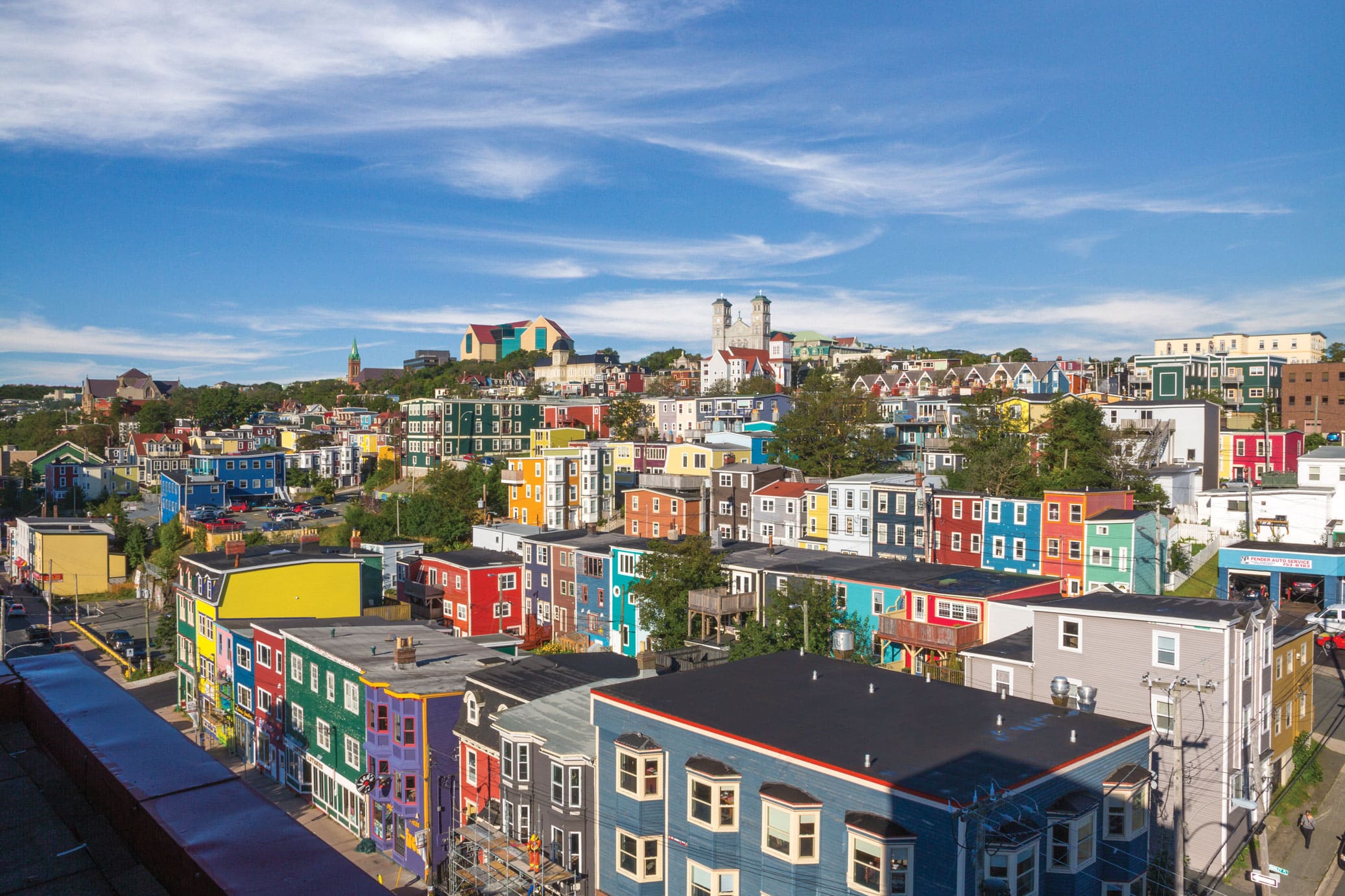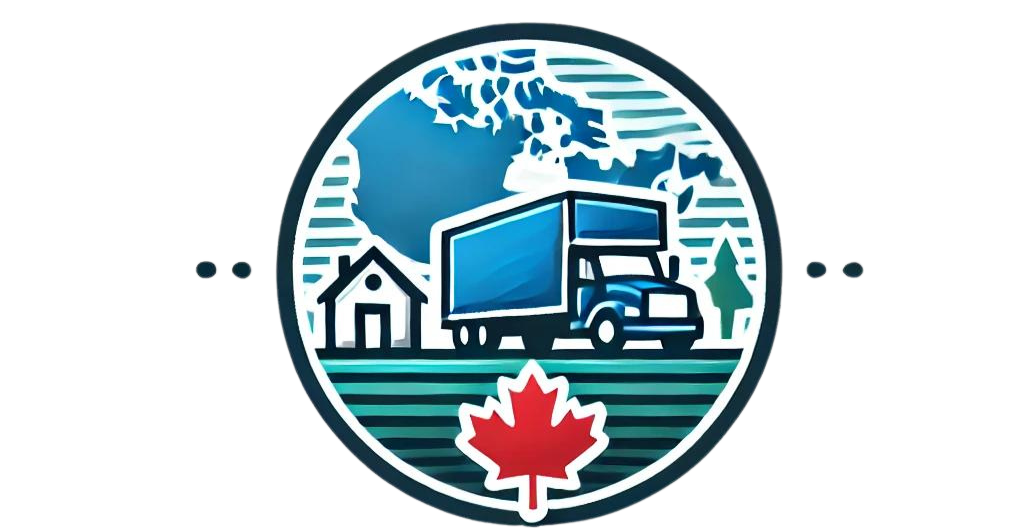Moving From Toronto To St. John'S
Are you considering a move from the bustling city of Toronto to the charming coastal town of St. John's? If so, you're not alone. Many individuals and families are drawn to the unique blend of history, culture, and natural beauty that St. John's has to offer. However, making the transition can be daunting, especially when it comes to navigating the significant differences between these two cities. From climate and cost of living to job opportunities and lifestyle, there's much to consider. In this article, we'll explore the key factors to keep in mind when moving from Toronto to St. John's.

A Comprehensive Guide to Moving from Toronto to St. John's
Moving from Toronto to St. John's can be a significant change, both culturally and geographically. St. John's, the capital city of Newfoundland and Labrador, offers a unique blend of rugged natural beauty, rich history, and a distinct cultural identity. If you're considering making the move, here's what you need to know:
Understanding the Cost of Living
One of the most significant factors to consider when moving to St. John's is the cost of living. Compared to Toronto, St. John's has a lower cost of living, with housing prices being significantly lower. However, it's essential to note that the cost of food and transportation can be higher in St. John's due to its remote location.
| Category | Toronto | St. John's |
|---|---|---|
| Housing (average rent) | $2,000/month | $1,200/month |
| Food (average meal price) | $15-$20 | $20-$25 |
| Transportation (gasoline) | $1.20/L | $1.40/L |
Job Opportunities and Economy
St. John's has a diverse economy, with major industries including oil and gas, mining, and tourism. While job opportunities may not be as abundant as in Toronto, there are still many opportunities available, particularly in the healthcare and education sectors.
Culture Shock and Adaptation
Moving to St. John's can be a significant cultural adjustment, particularly for those who are not familiar with the unique culture and dialect of Newfoundland and Labrador. It's essential to be open-minded and flexible, and to be prepared for a more laid-back and community-oriented way of life.
Education and Healthcare
St. John's has a well-regarded education system, with Memorial University being one of the largest universities in the province. The city is also home to several high-quality hospitals and medical centers, including the Eastern Health authority.
Getting Around and Transportation
St. John's has a compact downtown area, making it easy to get around on foot or by bike. The city also has a public transportation system, including buses and taxis. However, it's worth noting that having a car can be beneficial, particularly for those who plan to explore the surrounding area or travel to other parts of the province.
Is St John's a good place to live Canada?

St. John's, the capital and largest city of Newfoundland and Labrador, is a unique and charming place to live in Canada. It offers a distinctive blend of traditional and modern living, with a rich history, vibrant culture, and stunning natural beauty. Here are some aspects to consider:
Pros of Living in St. John's
St. John's has a lot to offer, including:
- Affordable Cost of Living: The city has a lower cost of living compared to other major cities in Canada, making it an attractive option for those looking to relocate.
- Vibrant Cultural Scene: St. John's is known for its rich cultural heritage, with a thriving arts scene, numerous festivals, and a unique blend of Irish, British, and Indigenous influences.
- Stunning Natural Beauty: The city is surrounded by rugged coastline, scenic hiking trails, and picturesque neighborhoods, offering plenty of opportunities to connect with nature.
Challenges of Living in St. John's
While St. John's has its advantages, it's essential to consider the challenges, including:
- Remote Location: St. John's is located on the easternmost edge of Canada, making it difficult to access other parts of the country and international destinations.
- Weather Conditions: The city experiences harsh winters, with frequent fog, wind, and snowstorms, which can be challenging for some individuals.
- Limited Job Opportunities: St. John's has a relatively small economy, with limited job opportunities in certain industries, which can make it difficult for some professionals to find employment.
Things to Do and See in St. John's
St. John's offers a wide range of activities and attractions, including:
- Signal Hill National Historic Site: This historic site commemorates the location where Guglielmo Marconi received the first transatlantic wireless signal in 1901.
- The Battery: This scenic neighborhood is famous for its colorful jellybean row houses and offers stunning views of the harbor.
- Cape Spear Lighthouse: Located on the easternmost point of North America, this lighthouse offers breathtaking views of the Atlantic Ocean and surrounding coastline.
Is Newfoundland cheaper than Toronto?

Newfoundland and Labrador, a province located on the eastern coast of Canada, is often compared to Toronto, Ontario, in terms of cost of living. While both regions have their unique characteristics, Newfoundland is generally considered to be cheaper than Toronto in several aspects.
Housing Costs
One of the most significant differences between Newfoundland and Toronto is the cost of housing. Rent and mortgage payments are significantly lower in Newfoundland compared to Toronto. According to data from the Canadian Real Estate Association, the average house price in St. John's, Newfoundland, is around $280,000, while in Toronto, it's over $1 million. Renting a one-bedroom apartment in St. John's can cost around $800-1,000 per month, whereas in Toronto, it can cost upwards of $2,000-3,000 per month.
Food Prices
Food prices also vary significantly between Newfoundland and Toronto. Grocery prices in Newfoundland are generally lower due to the province's proximity to the ocean, which allows for easier and cheaper transportation of goods. According to Statistics Canada, the cost of food in Newfoundland is around 10% lower than in Ontario. Here's a rough estimate of the prices of some common groceries in Newfoundland compared to Toronto:
- Milk (2L): $2.50 in Newfoundland, $3.50 in Toronto
- Bread (loaf): $2.00 in Newfoundland, $3.00 in Toronto
- Chicken breasts (1kg): $8.00 in Newfoundland, $12.00 in Toronto
Transportation and Utilities
Transportation and utility costs also differ between Newfoundland and Toronto. Gasoline prices in Newfoundland are often lower than in Toronto due to the province's own oil refinery. Additionally, the cost of electricity, water, and other utilities is generally lower in Newfoundland. Here's a breakdown of some estimated costs:
- Gasoline (per liter): $1.20 in Newfoundland, $1.40 in Toronto
- Electricity (per kWh): 12 cents in Newfoundland, 18 cents in Toronto
- Water (per cubic meter): $1.50 in Newfoundland, $2.50 in Toronto
Is it worth going to St John's Newfoundland?

St. John's, the capital city of Newfoundland and Labrador, Canada, is a hidden gem that offers a unique blend of natural beauty, rich history, and vibrant culture. Located on the eastern edge of Canada, St. John's is a must-visit destination for anyone looking to explore the rugged coastline, experience the famous Newfoundland hospitality, and discover the city's eclectic charm.
Unparalleled Natural Beauty
St. John's is surrounded by stunning natural landscapes, including the Atlantic Ocean, towering cliffs, and scenic hiking trails. The city's proximity to the ocean means that visitors can enjoy a range of outdoor activities, such as whale watching, kayaking, and iceberg spotting. The Signal Hill National Historic Site, a prominent landmark in St. John's, offers breathtaking views of the city and the ocean.
- Explore the scenic coastal trails, such as the East Coast Trail, which offers stunning views of the Atlantic Ocean.
- Take a guided boat tour to spot icebergs, whales, and other marine wildlife.
- Visit the Cape Spear Lighthouse, the easternmost point in North America.
Vibrant Culture and History
St. John's is steeped in history and culture, with a rich heritage that is evident in its colorful row houses, historic buildings, and lively festivals. The city is home to a thriving arts scene, with numerous galleries, museums, and performance venues. Visitors can experience the city's unique culture by attending a traditional Newfoundland kitchen party, where they can enjoy local music, dance, and cuisine.
- Visit the Newfoundland Museum, which showcases the province's history and culture.
- Explore the colorful Jellybean Row houses, a iconic symbol of St. John's.
- Attend a traditional Newfoundland kitchen party, where you can experience the city's vibrant culture.
Culinary Delights
St. John's is renowned for its fresh seafood, particularly cod, lobster, and mussels. The city is also home to a range of unique culinary experiences, including traditional Jiggs dinner, a hearty boiled meal that typically features salt beef, carrots, turnips, and cabbage. Visitors can sample the city's culinary delights at one of the many restaurants, cafes, or food trucks.
- Try a traditional Jiggs dinner at a local restaurant.
- Sample some of the city's fresh seafood, such as cod or lobster.
- Visit the St. John's Farmers' Market, where you can find local produce, crafts, and food vendors.
Is St John's Canada expensive?

Is St John's Canada Expensive?
St John's, the capital city of Newfoundland and Labrador, Canada, is known for its unique blend of traditional and modern culture, stunning natural beauty, and friendly people. However, when it comes to expenses, St John's can be considered a relatively expensive city in Canada.
Cost of Living in St John's
The cost of living in St John's is higher compared to other cities in Canada. The city has a high tax rate, and the prices of goods and services are relatively steep. Here are some examples of typical expenses in St John's:
- Rent: The average rent for a one-bedroom apartment in St John's is around $1,200 per month, which is higher than the national average.
- Food: Eating out in St John's can be expensive, with the average cost of a meal at a mid-range restaurant being around $20 per person.
- Transportation: Gasoline prices in St John's are higher than in other parts of Canada, and the city has limited public transportation options, making owning a car a necessity.
Housing Costs in St John's
Housing costs are a significant expense in St John's. The city has a relatively low vacancy rate, which drives up rental prices. Here are some examples of housing costs in St John's:
- Buying a home: The average price of a single-detached home in St John's is around $350,000, which is higher than the national average.
- Renting a home: The average rent for a three-bedroom house in St John's is around $2,000 per month.
- Utilities: The cost of utilities such as electricity, water, and heating is higher in St John's due to the city's remote location.
Tourism and Activities in St John's
Despite the higher cost of living, St John's offers a wide range of tourist attractions and activities that make it a unique and exciting destination. Here are some examples:
- Signal Hill National Historic Site: This historic site offers stunning views of the city and is free to visit.
- The Rooms: This museum features a collection of art and artifacts that tell the story of Newfoundland and Labrador's history and culture.
- Whale watching tours: Take a guided tour to see humpback, minke, and other whale species in their natural habitat.
FAQ
What are the main differences between living in Toronto and St. John's?
When considering a move from Toronto to St. John's, it's essential to understand the significant differences between these two cities. Culture is one of the most noticeable differences, as St. John's has a distinct Newfoundland and Labrador identity that is deeply rooted in its history and traditions. In contrast, Toronto is a cosmopolitan city with a diverse population from all over the world. The cost of living is another significant difference, as St. John's has a relatively lower cost of living compared to Toronto, especially when it comes to housing and food prices. Additionally, the job market in St. John's is smaller and more industry-specific, whereas Toronto has a thriving economy with diverse job opportunities.
How do I prepare for the different climate and weather in St. John's?
Moving from Toronto to St. John's means adapting to a cooler and more unpredictable climate. St. John's is known for its foggy and windy weather, especially during the winter months, which can be challenging for those who are not used to it. To prepare, it's essential to pack warm and waterproof clothing, including thermal layers, insulated boots, and a water-resistant jacket. Additionally, investing in winter tires and snow removal equipment may be necessary for those who plan to own a vehicle. It's also crucial to research and understand the weather patterns in St. John's to better prepare for the changes in climate.
What are the best ways to get around St. John's without a car?
While having a car can be convenient in St. John's, it's not necessarily a necessity. The city has a public transportation system that includes buses and taxis, which can help you get around. Additionally, St. John's is a relatively walkable city, and many amenities are within walking distance. For those who prefer a more environmentally friendly option, cycling is also a viable option, with many bike lanes and cycling paths throughout the city. Furthermore, ride-hailing services are also available in St. John's, making it easy to get around without relying on a personal vehicle.
How do I find a place to live in St. John's, especially in a competitive market?
Finding a place to live in St. John's can be challenging, especially in a competitive market. It's essential to start early and research different neighborhoods and types of accommodations, such as apartments, houses, and condos. Working with a realtor or property manager can also be beneficial in finding the right place. Additionally, considering short-term rentals or furnished apartments can provide a temporary solution while you look for a more permanent place to live. Moreover, be prepared to act quickly when you find a place you like, as the rental market in St. John's can move quickly.
